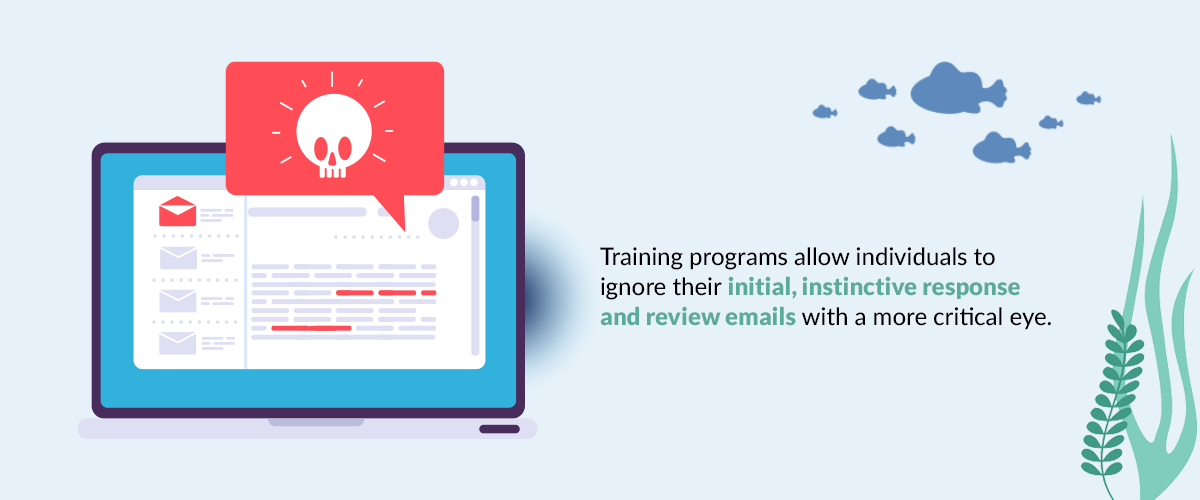


How Effective Is Phishing Prevention?



There are numerous tools to include in a security toolbelt. No single tool is the end-all-be-all of security solutions, so you need a well-rounded approach to protect against ever-changing threats.
Phishing is one type of those threats, designed to steal important data through malicious links, attachments or credential-gathering links. By adding preventive measures designed for phishing to your overall strategy, you can improve your defenses and protect your company.
Using Anti-Phishing Software
Anti-phishing software works to prevent phishing attempts from ever reaching your employees' inboxes. Artificial intelligence (AI) and machine learning (ML) are two emerging tools that help make anti-phishing software even more effective. AI algorithms analyze patterns, pointing out phishing trends that traditional security might miss. Meanwhile, ML lets your systems learn from new phishing threats, allowing them to adapt to changing strategies in real-time.
While these are helpful tools, investing in multiple types of anti-phishing measures will help guard your organization from the huge number of phishing strategies. Types of anti-phishing tools include:
- Anti-malware and anti-virus software
- Multi-factor authentication
- Web filters
- Spam filters
All of these measures work together to help prevent phishing attempts from reaching you and your team. However, some phishing attempts will always sneak through, especially as bad actors come up with new strategies to bypass outdated tools. As a result, your employees need to know how to spot phishing and alert the right people about it.
Does Phishing Prevention Work?
With 74% of breaches involving the human element of the attack, it's essential to educate your employees to help reduce their chances of clicking on the wrong link. With quality phishing prevention training, you can arm individuals with the knowledge needed to combat phishing. Taking a proactive approach will improve your chances in a world where cyberattacks are constantly coming.
The Effectiveness of Phishing Awareness Training
While most people can recognize classic phishing signs — such as misspelled words or requests for sensitive information — they often struggle with modern strategies like urgent messages from seemingly authoritative sources. Phishing works to target your social, biological and emotional survival instincts, making you instinctively respond to the phishing attempt before your critical thinking skills can catch up. By raising awareness, training programs allow individuals to ignore their initial, instinctive response and review emails with a more critical eye.

With phishing training showing them what to recognize and how to respond logically to phishing scams, your team will be able to more effectively combat cyberattacks. Educated team members will help to form a second protective barrier that works well with your anti-phishing software measures. With an effective phishing training program, your organization will feel prepared to handle anything that comes their way.
How Phishing Simulations Can Help
Phishing simulations add a practical element to training, allowing individuals to apply their knowledge to simulated real-world scenarios. These simulations should mimic a variety of phishing scenarios, adapting to the evolving tactics used by attackers. Template creators and large phishing template libraries let you fit phishing examples to your needs, while effective analytics tools deliver better data for improved results.
All the training in the world is ineffective without real-world applications. Phishing drills, when conducted regularly, provide your organization with valuable insights into employee readiness and response capabilities. These drills help deliver reduced click-through rates and increased incident reporting, helping to protect your company against the consequences of a phishing scam.
The Role of Employees in Improving Cybersecurity
Your employees and company culture play a significant role in defending against cyber threats. Establishing a robust security stance means cultivating a culture of vigilance among your staff. You need to acknowledge their importance in mitigating threats and let them know how essential they are to protecting your organization.
Creating a Culture of Vigilance
Integrating security into your daily operations is essential for creating a culture of vigilance. Best practices — like implementing strong password policies, regularly updating software, exercising caution with emails and using multi-factor authentication — form the foundation of security culture.
With continuous awareness and education programs, you can ensure your employees stay informed and aware of emerging threats. These measures help reinforce mindfulness and create the proactive mindset at the heart of a vigilant organization.
The Importance of a Cybersecurity Baseline
A cybersecurity baseline is your standardized set of security measures that everyone in your organization follows. Establishing and maintaining a baseline means implementing fundamental security practices, like multi-factor authentication, encryption and secure browsing habits. Organizations that neglect baseline practices expose themselves to cyber risks and data vulnerabilities.
Having employees always practicing safe computing, like phishing awareness and simulations, reinforces this baseline. Giving them the resources and simulations to act as active participants in defending against cyber threats. Emphasizing collective responsibility helps reduce the risk of breaches while creating a resilient, proactive culture. Working to improve employee involvement creates a defense system that puts people first and stops phishing threats even when they get through software.
What to Know About Cybersecurity Investment and ROI
Your return on investment (ROI) for cybersecurity is an important consideration. Businesses need to know they're getting the most out of their investment, financially and security-wise.
With the average cost of a data breach hitting $4.45 million in 2023, protecting against phishing is a wise investment for any organization. Weigh the cost of investing in better cyber security with the potential losses you face due to data breaches, downtime, reputational damage and legal fines due to phishing.
While the upfront costs of investing in anti-phishing software and training courses can seem high, the potential savings from preventing phishing are significant. A successful phishing attack could leave you open to significant legal fines and downtime that drastically reduces productivity. Customers who find their data caught up in a phishing attack may leave. Preventing data breaches through training and software can prevent these issues from happening, saving you a lot down the road.
Beyond the direct benefit to your company, letting your partners and clients know that you invest in security and training can strengthen your reputation. It shows a dedication to protecting your clients' data and helps your reputation in an increasingly connected world.
Enhance Your Data Breach Prevention with Phin Security
Phin Security works with your organization to help you develop security tailored to your cyber needs. We offer advanced phishing simulations and training services, equipping your team with the skills to identify and avoid phishing attempts effectively.
Partnering with Phin helps your team build the confidence and awareness you need to navigate the shifting world of cyber threats. Contact us or Start a free trial today to boost your phishing security.







Leave a comment: